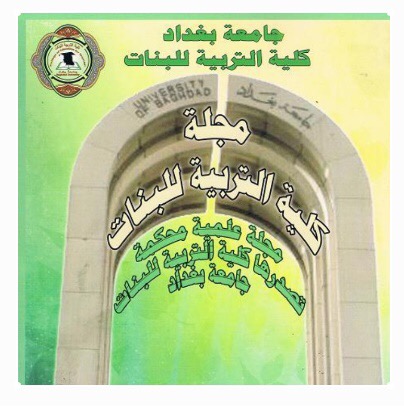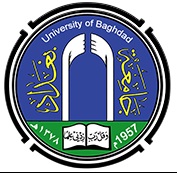الحیوانات والطیور والحشرات والزواحف في كتاب الفندیداد (احد كتب الافستا الزردشتیة)
Abstract
The book of Alphendidad is considered as an important part of the holy book of
Avesta in the Zoroastrian religion. It is a religious and urbanization book that consists of a
number of chapters dealing with the creation. The book includes 22 chapters, mostly edited
as a dialogue between Ahuaramzda the god of goodness and his prophet Zoroaster. The
biggest chapter deals with the rules of purification of vices of the devil and dismissing it of
the places around, hence it is the book of law of Zoroastrian about the important animals,
birds , insects, and reptiles and their categorization according to their creation; creatures of
the spirit of goodness and creatures of the spirit of evilness.
Some of these creatures are included for their influence upon the life, nature, and
other creatures, in addition to their influence upon the religious life. This is the focus of the
current study that sheds light on the identity of these creatures and their effect on the
mentality and the Zoroastrian belief.
1. The Alphendidad is considered as the important idiosyncratic legislative part in the
book of Avesta, in which there is a lot of the legislations and laws that rule the
individual and social life and the consequences of the deeds of man as a reward
and punishment.
2. The study tries to concentrate on a specific part of the book of Alphendidad and
study it. It surveys the most important creatures in the book, especially animals,
birds, insects, and reptiles – according the Zoroastrian belief -. The Zoroaster
divides theses creatures into two types according to the creation and impotence.
The blessed creatures of goodness that created by the god of goodness,
Ahoramzda; and cursed creatures of evilness created by the god of evilness,
Ahrimn.
3. The ideas, points of views, rituals, and worships included in the book of
Alphendidad disagree with the common sense and any logical thinking. This is a
defect against the Zoroastrian belief and thinking. The legend and myth is the only
means by which events are explained especially the creation and the view of the
world that is ruled by these two forces; the force of goodness and its creatures and
the force of evilness and its creatures.
4. The human mind tends more to believe in myth and legend to explain mysterious
phenomena. Along history, Persians tend to weave legendry events in literature
resulting from their worshiping of natural phenomena that are difficult to be
explained in another way. They have found that the clear blue sky, light, fire, air,
and water are divine and good creatures. They have even called the sun and the eye
of god and light as the son of god. And darkness, drought, and sickness are divine,
cursed, and evil creatures.
5. The creation is focused on the good creatures especially livestock, small and big
animals, dogs, and birds as the creatures of goodness. the study concentrates also
on how to work on protectin and mentaining these creatures as the means of
victory for the god of light, Ahoramzada against the cursed creatures of evilness.
Therefore, Zoroaster imposes on his followers that they should sanctify these
creatures and never harm them or killing them with no right.
6. The Ancient Persian thinking has missed the fact that this world and its creatures
are the creation of one sole God. The question that raises here is weather the
Zoroastrian religion is a multiple-god or standard religion. Researches disagree to
answer this question. Some of them see the world with its two forces of goodness
and evilness are but two conflicting forces of the same God, and others believe that
Zoroaster is standard theologically and philosophically he is a multiple-god
religion.
7. The categorization of the animals, birds, insects, and reptiles into two types
according to the Zoroastrian belief is an evidence of ignorance and lack of
awareness. All creatures are the creation of the One sole God. The Zoroastrian has
divided these creatures into two types according to their features, work and their
effect on nature among other useful or harmful creatures. The religion imposes the mythical and legendary view picturing these creatures as animals, birds, insects
according to their importance.
8. The Zoroastrian religion exaggerates the importance of these creatures. It sanctify
and blessed the useful creatures and its remnants, as it considered the cow as a
very important creature by Ahoramzda. Its importance lies in the fact that the cow
is the source of their food, a means of cultivating their lands. Cow is considered as
the capital of the farming communities, and since the Parisian is an old agrarian
society, the cow and ox are important supplements. Yet there is a great deal of
exaggeration in dealing with the cow to an illogical extent of considering its urine
as a sacred thing for purification of sins instead of holy water, which a thing that
goes against proper and common test.
9. The study signifies a group of animals described by Zoroaster as creatures of
goodness as they have good and useful features according to the god of goodness,
Ahoramzda. These animals are: Cow, Awl, fox, ox, camel, donkey, sheep, horse,
bird, dog, goat, and eagle).
10. The study also identifies a group of creatures that are considered as harmful –
according to Zoroastrain religion – that affects the good creatures and affects the
nature and spoil it. Zoroaster has allowed the destruction and killing these
creatures and its harm to support the force of goodness over evilness. It also
considered the destruction of these creature as part of the important religious
rituals of the Zoroastrian belief to purgation of sins and evils and to get nearer to
the god of goodness Ahoramzda. These creatures are: rats, locusts, snakes, flies,
wolves, turtles, frogs, spiders, scorpions, lice, ants).

Downloads
Published
Issue
Section
License
![]()
All articles published in Journal of College of Education for Women are licensed under a Creative Commons Attribution 4.0 International License.










